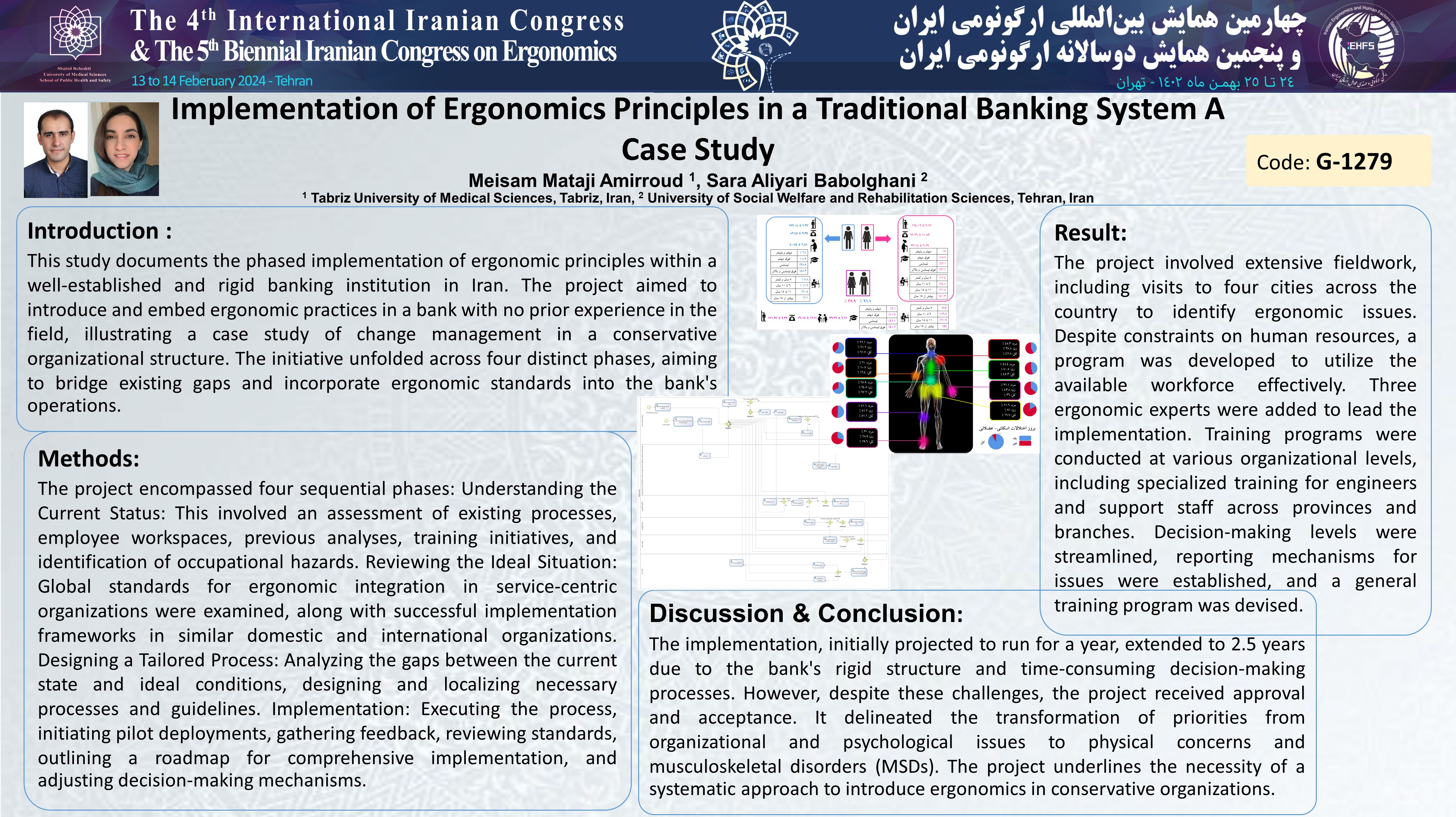Implementation of Ergonomics Principles in a Traditional Banking System: A Case Study
Code: G-1279
Authors: Meisam Mataji Amirroud © ℗, Sara Aliyari Babolghani
Schedule: Not Scheduled!
Download: Download Poster
Abstract:
Introduction
This study documents the phased implementation of ergonomic principles within a well-established and rigid banking institution in Iran. The project aimed to introduce and embed ergonomic practices in a bank with no prior experience in the field, illustrating a case study of change management in a conservative organizational structure. The initiative unfolded across four distinct phases, aiming to bridge existing gaps and incorporate ergonomic standards into the bank's operations.
Methods and Materials / Case Report
The project encompassed four sequential phases: Understanding the Current Status: This involved an assessment of existing processes, employee workspaces, previous analyses, training initiatives, and identification of occupational hazards. Reviewing the Ideal Situation: Global standards for ergonomic integration in service-centric organizations were examined, along with successful implementation frameworks in similar domestic and international organizations. Designing a Tailored Process: Analyzing the gaps between the current state and ideal conditions, designing and localizing necessary processes and guidelines. Implementation: Executing the process, initiating pilot deployments, gathering feedback, reviewing standards, outlining a roadmap for comprehensive implementation, and adjusting decision-making mechanisms.
Results
The project involved extensive fieldwork, including visits to four cities across the country to identify ergonomic issues. Despite constraints on human resources, a program was developed to utilize the available workforce effectively. Three ergonomic experts were added to lead the implementation. Training programs were conducted at various organizational levels, including specialized training for engineers and support staff across provinces and branches. Decision-making levels were streamlined, reporting mechanisms for issues were established, and a general training program was devised.
Conclusion
The implementation, initially projected to run for a year, extended to 2.5 years due to the bank's rigid structure and time-consuming decision-making processes. However, despite these challenges, the project received approval and acceptance. It delineated the transformation of priorities from organizational and psychological issues to physical concerns and musculoskeletal disorders (MSDs). The project underlines the necessity of a systematic approach to introduce ergonomics in conservative organizations.
Key Words
Ergonomics, banking institution, change management, organizational structure, implementation phases, training programs, decision-making mechanisms, musculoskeletal disorders (MSDs)
Comments (0)
Post a comment
Post comment is closed by admin.
